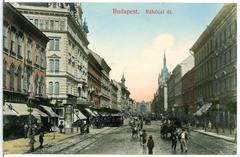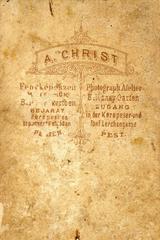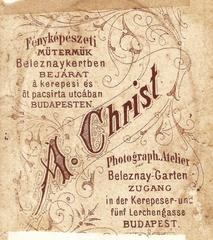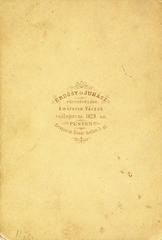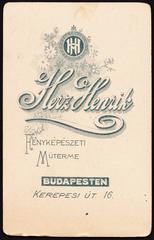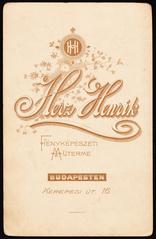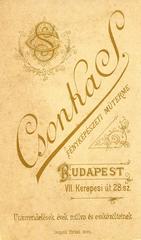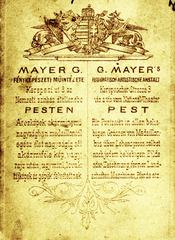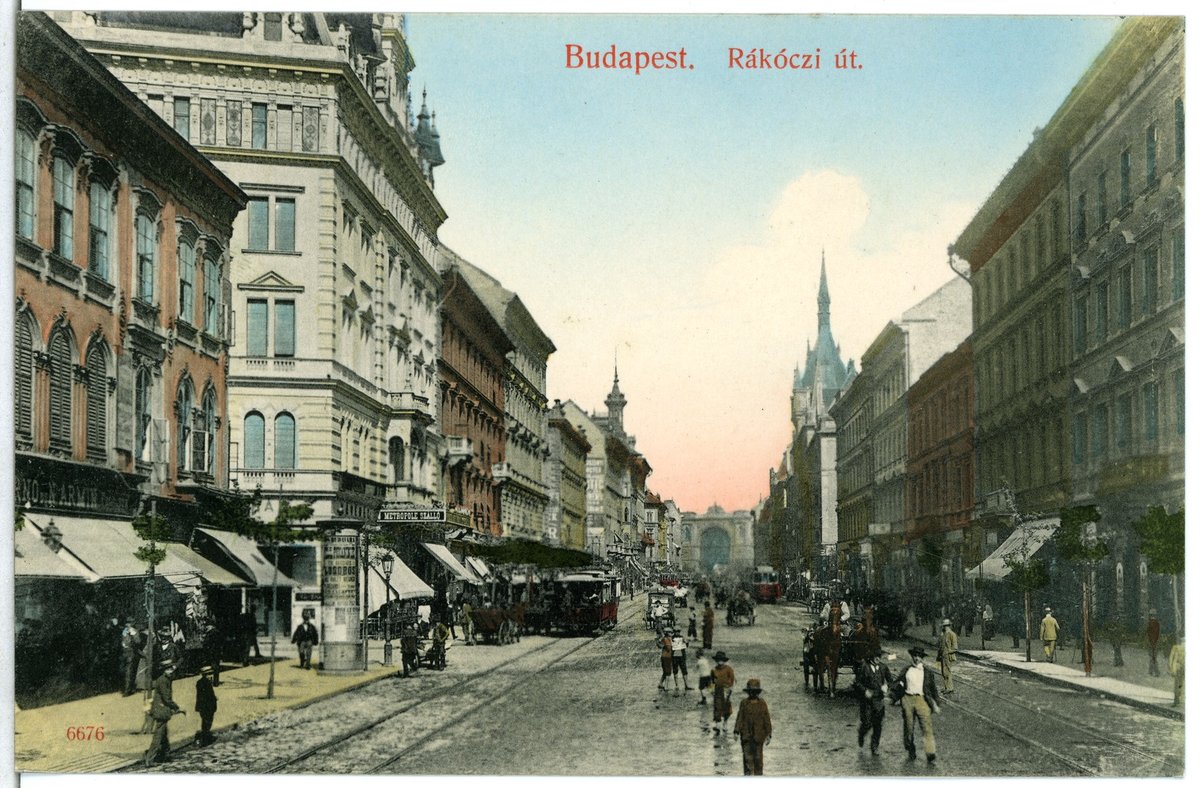
Rákóczi Avenue Budapest: Visiting Hours, Tickets, and Historical Sites Guide
Date: 14/06/2025
Introduction to Rákóczi Avenue Budapest and Its Historical Significance
Rákóczi Avenue (Rákóczi út) is one of Budapest’s most iconic and historically significant boulevards, linking the city center at Astoria with the monumental Keleti Railway Station. Its origins as the ancient Hatvani út—a main trade route between Pest and northeastern Hungary—have evolved over centuries. The avenue today is a vibrant urban artery that mirrors Budapest’s rise as a modern European capital, featuring an array of architectural styles and historic sites.
The transformation of Rákóczi Avenue in the late 19th and early 20th centuries, particularly after it was renamed in 1906 to honor Francis II Rákóczi, reflects the city’s dynamic growth. Landmarks such as the New York Palace and Uránia National Film Theatre exemplify the avenue’s architectural and cultural richness. Well served by Metro Line 2, trams, and buses, Rákóczi Avenue is accessible and lively, offering visitors layers of history, culture, and urban vitality.
This guide provides detailed information for exploring Rákóczi Avenue: historical context, key landmarks, visiting hours, ticketing, accessibility, travel tips, and event highlights. Whether you’re fascinated by history, architecture, or Budapest’s energetic urban scene, Rákóczi Avenue is an essential destination. For more, see Budapest Tourist Info, Budapest City Guide, and Budapest by Locals.
Table of Contents
- Introduction
- Early Origins and Urban Context
- 19th Century Transformation
- Architectural Evolution
- 20th Century Developments
- Transportation and Infrastructure
- Cultural and Social Significance
- Urban Renewal and Contemporary Developments
- Notable Landmarks and Points of Interest
- Practical Information for Visitors
- Nearby Attractions
- Events and Festivals
- Travel Tips and Recommendations
- FAQ
- Visuals and Media
- Conclusion and Call to Action
Early Origins and Urban Context
Rákóczi Avenue traces its roots to the 18th-century Hatvani út, once a key trade and travel route connecting Pest with Hungary’s northeast (Budapest History). Its alignment facilitated commerce and movement as Pest expanded beyond its medieval walls.
19th Century Transformation
The 1873 unification of Buda, Pest, and Óbuda spurred rapid urban development. The avenue was renamed Rákóczi út in 1906 to commemorate Francis II Rákóczi, national hero of the Hungarian War of Independence. By the early 20th century, the avenue had become a grand boulevard, marked by the construction of Keleti Railway Station in 1884 at its eastern end (Timeline of Budapest).
Architectural Evolution
Rákóczi Avenue boasts a mosaic of styles, from Neo-Renaissance to Art Nouveau and Modernism. Notable landmarks such as the New York Palace (1894) and Uránia National Film Theatre (Moorish Revival, 1896) reflect the city’s cosmopolitan character and economic boom (Budapest Highlights).
20th Century Developments
The avenue suffered wartime damage and underwent postwar reconstruction, including modernist interventions and a wider roadway for increased traffic. During the communist era, it was renamed Lenin Avenue, but its original name was restored in 1990. Rákóczi Avenue has remained central to political events, including the 1956 Revolution (Timeline of Budapest).
Transportation and Infrastructure
Rákóczi Avenue is a crucial transport axis, historically hosting horse-drawn and later electric trams. Today, Metro Line 2 runs beneath the avenue, with major stops at Astoria, Blaha Lujza tér, and Keleti pályaudvar. Trams 4 and 6 intersect at Blaha Lujza tér, and numerous buses ensure connectivity (Budapest City Guide).
Cultural and Social Significance
The avenue is home to historic cafés, theaters, and cinemas, notably the famed New York Café—a gathering place for artists and writers. Public events, demonstrations, and festivals give the avenue a lively social dimension (Budapest Highlights).
Urban Renewal and Contemporary Developments
Recent restoration projects have rejuvenated historic facades and improved public spaces. Urban planning debates focus on reducing traffic, enhancing pedestrian access, and promoting sustainability (Budapest City Guide).
Notable Landmarks and Points of Interest
- New York Palace (New York Café): Open daily 7:00 AM–11:00 PM. Entry is free unless attending special events. Reservations recommended (PassingThru: Landmarks in Budapest).
- Uránia National Film Theatre: Screenings daily; tickets from 1000–3000 HUF. Check official website for hours.
- Blaha Lujza Square: Major public space and transit hub, notable for Hungary’s first traffic light (1926).
- Keleti Railway Station: Open 24/7. Ticket offices operate 5:00 AM–10:00 PM. Wheelchair accessible (Keleti Railway Station).
- Rákóczi Square Market Hall: Open Mon–Sat 6:00 AM–6:00 PM. No entrance fee (budapestcity.org).
- Statue of Ferenc Rákóczi: Symbolic monument accessible year-round (Statue of Ferenc Rákóczi).
Practical Information for Visitors
- Visiting Hours: Public spaces accessible at all times. Cafés, theaters, and market halls typically open 7:00 AM–11:00 PM.
- Tickets: Entry to public spaces is free. Tickets required for film screenings, theater, guided tours.
- Accessibility: Major landmarks and transport stations are wheelchair accessible.
- Guided Tours: Walking tours available from local operators; booking ahead is advised.
- Photography: Top spots—New York Palace interior, Uránia Theatre façade, Keleti Station.
Nearby Attractions
- Hungarian National Museum: Short walk from the avenue.
- Great Synagogue (Dohány Street): In District VII, accessible via Astoria.
- Arena Mall: Near Keleti Station for shopping.
Events and Festivals
- St. Stephen’s Day (August 20): Parades and fireworks, processions near the avenue (Budapest by Locals).
- Budapest Spring and Autumn Festivals: Cultural events in nearby venues (Budapest by Locals).
- Markets and Street Fairs: Regular events at Rákóczi Square Market Hall (Budapest Flow).
The adjacent districts, such as Józsefváros (District VIII) and Erzsébetváros (District VII), are known for their multicultural character, vibrant nightlife, and local markets (budapestbylocals.com).
Travel Tips and Recommendations
- Safety: Budapest is generally safe, but remain vigilant in crowds. Use secure bags and avoid poorly lit areas at night (Travelpander.com).
- Currency: Credit cards widely accepted; carry some HUF for small vendors.
- Language: English is common in tourist areas; learning basic Hungarian phrases is appreciated.
- Dining: From historic cafés to street food, the avenue offers diverse choices. Tap water is safe to drink.
- Transport: Tickets for Metro/trams at stations, newsstands, or via BudapestGO app. Validate tickets before use (Budapestbylocals.com).
FAQ
Q: What are the opening hours of Rákóczi Avenue’s main attractions?
A: Most operate 7:00 AM–11:00 PM. Check specific venues for details.
Q: Is the avenue accessible for wheelchair users?
A: Yes, major transport stations and sites provide accessible features.
Q: Are guided tours available?
A: Yes, several companies offer history- and architecture-focused tours.
Q: Is there a fee to explore Rákóczi Avenue?
A: The street is public and free; some venues require tickets for entry or events.
Q: Where can I park near the avenue?
A: Underground parking is available at Rákóczi Square, with designated disabled spaces.
Visuals and Media
- New York Palace façade on Rákóczi Avenue (alt: “Historic New York Palace on Rákóczi Avenue, Budapest”)
- Uránia National Film Theatre exterior (alt: “Uránia National Film Theatre building on Rákóczi Avenue”)
- Rákóczi Square Market Hall interior bustling with vendors (alt: “Inside Rákóczi Square Market Hall bustling with fresh produce”)
- Fisher Boys Fountain at Rákóczi Square (alt: “Halászó gyerekek kútja - Fisher Boys Fountain at Rákóczi Square”)
Conclusion and Call to Action
Rákóczi Avenue is a microcosm of Budapest’s layered history, vibrant culture, and architectural splendor. From the grandeur of Keleti Railway Station to the literary allure of the New York Café, the avenue presents a rich cross-section of the city’s past and present. Use this guide for practical insights on visiting hours, ticketing, accessibility, and travel tips to ensure a memorable experience.
For further planning, download the Audiala app for offline maps and audio guides, subscribe to our newsletter, and follow us on social media for the latest updates. Explore related articles for deeper insights into Budapest’s architectural and cultural heritage.
References and Further Reading
- Budapest Tourist Info
- Budapest City Guide
- Budapest by Locals
- Uránia National Film Theatre
- PassingThru: Landmarks in Budapest
- Hungary Budapest Guide: Events
- Travelpander: Is Budapest Safe to Travel?
- Hungarian Conservative: Coffee Houses Budapest History
- budapestcity.org
- Keleti Railway Station
- Statue of Ferenc Rákóczi
- Budapest Flow
